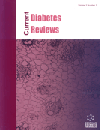
Full text loading...
We use cookies to track usage and preferences.I Understand
In humans, insulin resistance is a physiological response to infections developed to supply sufficient energy to the activated immune system. This metabolic adaptation facilitates the immune response but usually persists after the recovery period of the infection and predisposes the hosts to type 2 diabetes and vascular injury. In patients with diabetes, superimposed insulin resistance worsens metabolic control and promotes diabetic ketoacidosis. Pathogenic mechanisms underlying insulin resistance during microbial invasions remain to be fully defined. However, interferons cause insulin resistance in healthy subjects and other population groups, and their production is increased during infections, suggesting that this group of molecules may contribute to reduced insulin sensitivity. In agreement with this notion, gene expression profiles (transcriptomes) from patients with insulin resistance show a robust overexpression of interferon-stimulated genes (interferon signature). In addition, serum levels of interferon and surrogates for interferon activity are elevated in patients with insulin resistance. Circulating levels of interferon-γ-inducible protein-10, neopterin, and apolipoprotein L1 correlate with insulin resistance manifestations, such as hypertriglyceridemia, reduced HDL-c, visceral fat, and homeostasis model assessment-insulin resistance. Furthermore, interferon downregulation improves insulin resistance. Antimalarials such as hydroxychloroquine reduce interferon production and improve insulin resistance, reducing the risk for type 2 diabetes and cardiovascular disease. In addition, diverse clinical conditions that feature interferon upregulation are associated with insulin resistance, suggesting that interferon may be a common factor promoting this adaptive response. Among these conditions are systemic lupus erythematosus, sarcoidosis, and infections with severe acute respiratory syndrome-coronavirus-2, human immunodeficiency virus, hepatitis C virus, and Mycobacterium tuberculosis.

Article metrics loading...

Full text loading...
References


Data & Media loading...

